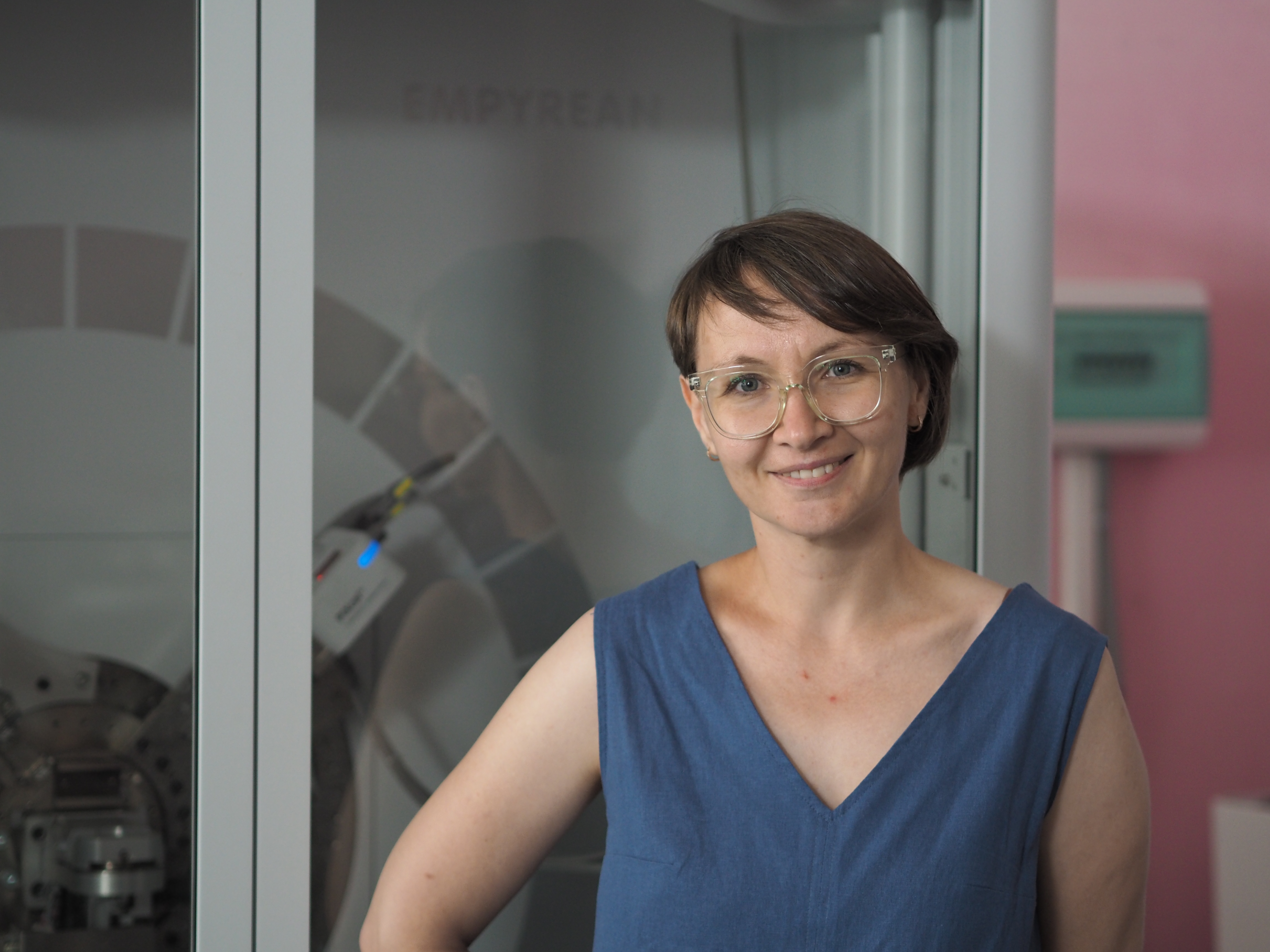Interview conducted in September 2021
Tatyana N. Vershinina – PhD. in physics and mathematics, senior researcher at Sector №1 Diffraction, HRFD Group
I first came to FLNP as a user in 2012. We conducted an experiment on a stress diffractometer with Gizo Bokuchava, Vyacheslav Sumin, and Igor Papushkin (now we are working in the same office) and evaluated the residual stresses in titanium samples after rolling. I spent a week in Dubna and I really liked it here: I liked the Institute, the people, the calm working atmosphere and, of course, the city itself. As a mother – at that time of a two-year-old child – it seemed to me that this is the perfect town to raise children. Then for the first time I thought that I would like to live and work here.
I often remember my alma mater, Tomsk State University. The knowledge that was acquired there, even having been unclaimed for many years, was invoked while working at FLNP and easily resurfaced in my memory.
After graduating from the Physics Faculty of TSU, I worked at the Institute of Strength Physics of Materials Science of the Tomsk Scientific Center, and in 2005 a part of the staff of my Physics Materials Science laboratory (about 10 people) moved to the new Center for Nanostructured Materials and Nanotechnologies in Belgorod as an organized group. There I got the opportunity to get high-level results and learn new techniques. I became responsible for the X-ray diffractometer. It was a little simpler than the one I am working on now, but with its own advantages. Each tool has its own weak and strong sides.
At the end of 2019, my friend from the Laboratory of Nuclear Reactions asked if I would like to work at JINR. And I replied that this is my age-old dream. There and then my path to JINR began. I prepared a report on cermet materials, which I was investigated, and came to speak at a seminar at FLNP, led by Anatoly Mikhailovich Balagurov. After the report, Anatoly Mikhailovich asked how the Laboratory could be useful to us. I gathered my courage and told directly: "I want to work for you." A week later, my future colleague Ivan Bobrikov called me to tell they were hiring me. In December, I came to Dubna to meet the director of the laboratory, and in January I started work.
I did not give up my research topic: I continue to deal with boride-based cermets. This theme is very exciting: I like multiphase materials because you need to puzzle over how phase transformations occur in them, in which order. In experiments, you put some components for sintering, and at the output you get completely different ones: a process of liquid-phase reaction sintering takes place. My job is constantly throwing puzzles at me. It is very convenient that right here in the Laboratory you can synthesize materials and immediately see the phase composition using diffractometers.
In the field of materials research, scientists can be divided into two large camps. There are those who are engaged in the development of materials, and those who go deep into mastering the methods for research of those very materials. For the second camp, our Laboratory is an ideal place. Despite the fact that the diffraction sphere is so wide that no matter how much you want, it is impossible to understand thoroughly all the techniques, here you can choose the one that you like. I noticed that in our Laboratory of Neutron Physics, despite completely different characters and tendencies, everyone has a common feature: a pedantic meticulousness in hitting the same spot again and again, and thoroughly mastering their method. FLNP employs high-level specialists who share their knowledge, foster a speedy growth of young scientists, help and guide in writing articles. I feel how my professional growth is continuously going on here, how every day I gain new invaluable experience.

